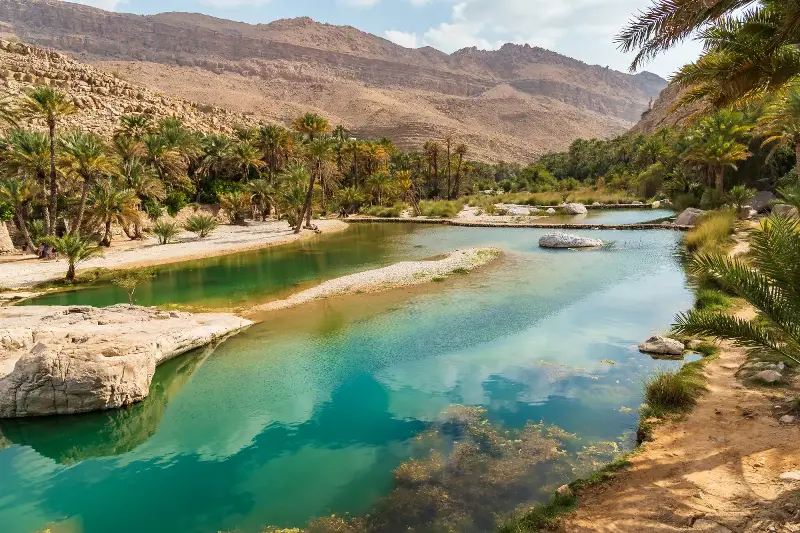Have you ever gazed at breathtaking photos of verdant palm trees and sparkling pools of water resting quietly in the heart of a vast, sun-scorched desert? These are not optical illusions but genuine marvels of nature known as oases. Though they may seem almost magical, oases are both scientifically intriguing and vitally important to human civilisation and the survival of unique ecosystems. Let’s journey into the world of oases and uncover why they’re considered the lush jewels of desert landscapes.
The Science Behind Oasis Formation

Contrary to popular belief, oases don’t appear randomly in the middle of nowhere. Their formation hinges on a combination of geology, geography, and sometimes, human intervention. Most oases are created where underground rivers, aquifers, or natural springs reach the surface. Fault lines in the Earth’s crust often create channels for subterranean water to bubble up, providing the essential ingredient for life in an otherwise arid wasteland.
Wind patterns also play a role, as they can create depressions in deserts that collect and retain rainwater. Over centuries, this accumulation of water allows vegetation to thrive, effectively carving out pockets of lush green in a world dominated by sand and stone. In some cases, ancient civilisations have contributed to the creation of oases by digging wells and canals, harnessing groundwater to bring the life-giving essence of water to new areas.
Nature’s Safe Havens: Biodiversity in Oases
While deserts might seem barren at first glance, oases are vibrant hubs of biodiversity. Thanks to the presence of water, a staggering variety of life calls oases home. Palms, fig trees, and tamarisks cluster around these watery sanctuaries, offering shade and food. These plants not only provide comfort for passing humans but also shelter and sustenance for animals, including birds, reptiles, and mammals.
Some oases have even become critical stopovers for migratory bird species, acting like halfway hotels for journeys across impossible distances. You might spot colourful hoopoes, swift sandgrouse, or even elusive desert foxes within these green retreats. The interplay between flora and fauna at an oasis results in micro-ecosystems utterly unique within the greater desert environment.
Oases in Human History and Culture

Throughout history, oases have been beacons of hope for desert travellers and cornerstones of ancient trade routes. The legendary Silk Road’s very existence relied on a string of oases, such as those in the Gobi Desert, where weary merchants and caravans could rest, trade goods, and replenish supplies before continuing their arduous journeys.
Entire civilisations have sprung up and flourished around oases. The Egyptian city of Siwa, for example, has thrived for centuries due to its natural springs and abundant date palms. In North Africa and the Middle East, oases remain focal points of agricultural production, often nurturing thriving communities amidst the emptiness of surrounding sands.
Oases have transcended physical importance to enter myth and folklore, representing sanctuary, fertility, and hope. Stories from “One Thousand and One Nights” to modern adventure films tap into the allure and mystery surrounding these precious green gems.
The Modern Importance of Oases
In today’s world, oases continue to serve crucial roles, both environmentally and economically. As deserts expand due to climate change and overuse of resources, oases become even more vital as refuges for endangered species and biodiversity hotspots. They also remain agricultural powerhouses, producing dates, olives, and other crops using time-honoured irrigation techniques.
Oases are now seen as frontlines in the fight against desertification—a process where fertile land turns to desert, often caused by deforestation, over-farming, and climate change. Scientists are studying traditional oasis management methods to develop sustainable ways of preserving these natural wonders, and to potentially revitalise other threatened regions.
Moreover, oases are attracting eco-tourism, offering adventurers a unique blend of cultural heritage, natural beauty, and unforgettable experiences. The idea of sipping sweet tea under ancient palms after a day’s camel ride continues to lure intrepid travellers from across the globe.
From supporting rare wildlife to enabling ancient civilisations—and providing hope for a green future—oases truly are nature’s lush jewels in even the harshest environments. Next time you spot a photograph of a palm-dotted pool in the middle of endless dunes, you’ll know there’s so much more to these remarkable sanctuaries than meets the eye.
